
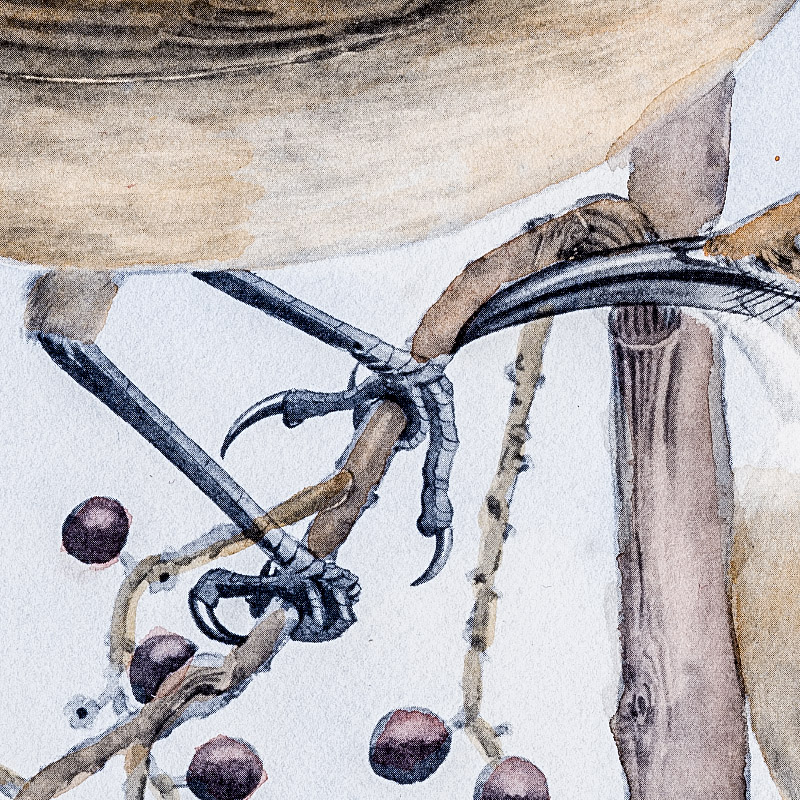
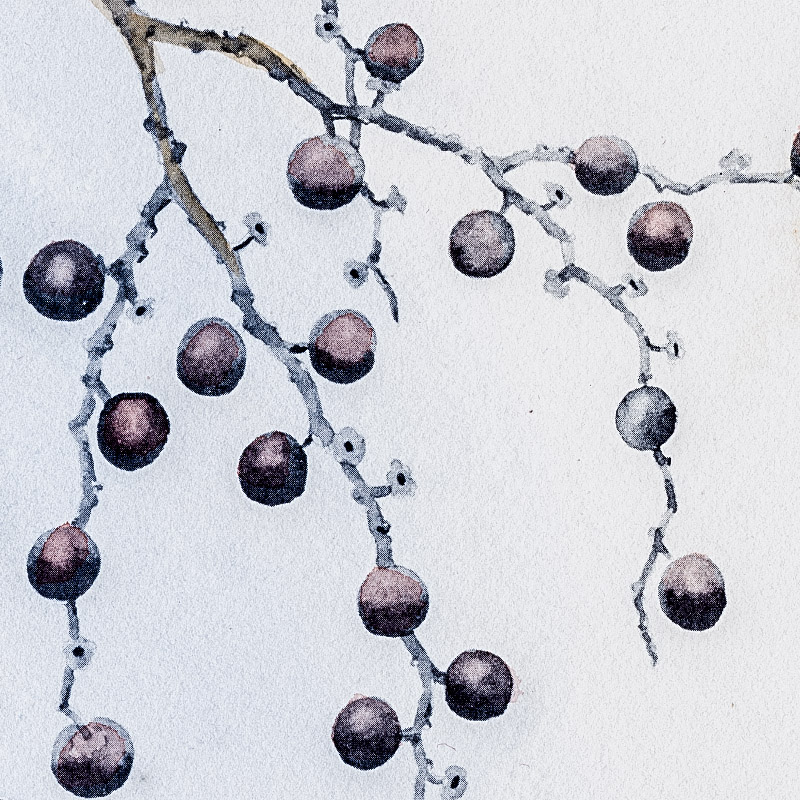
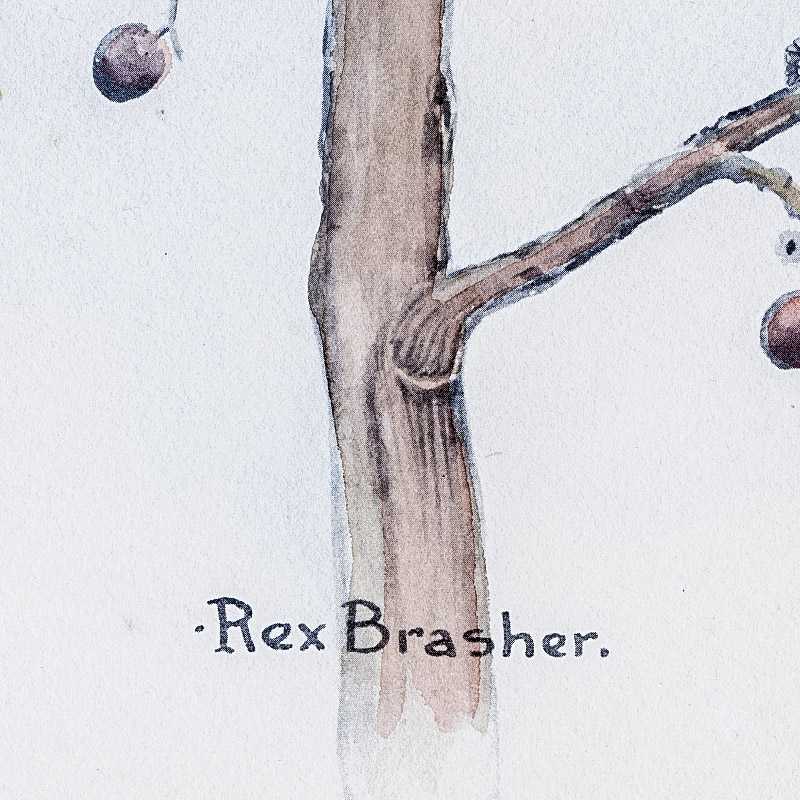
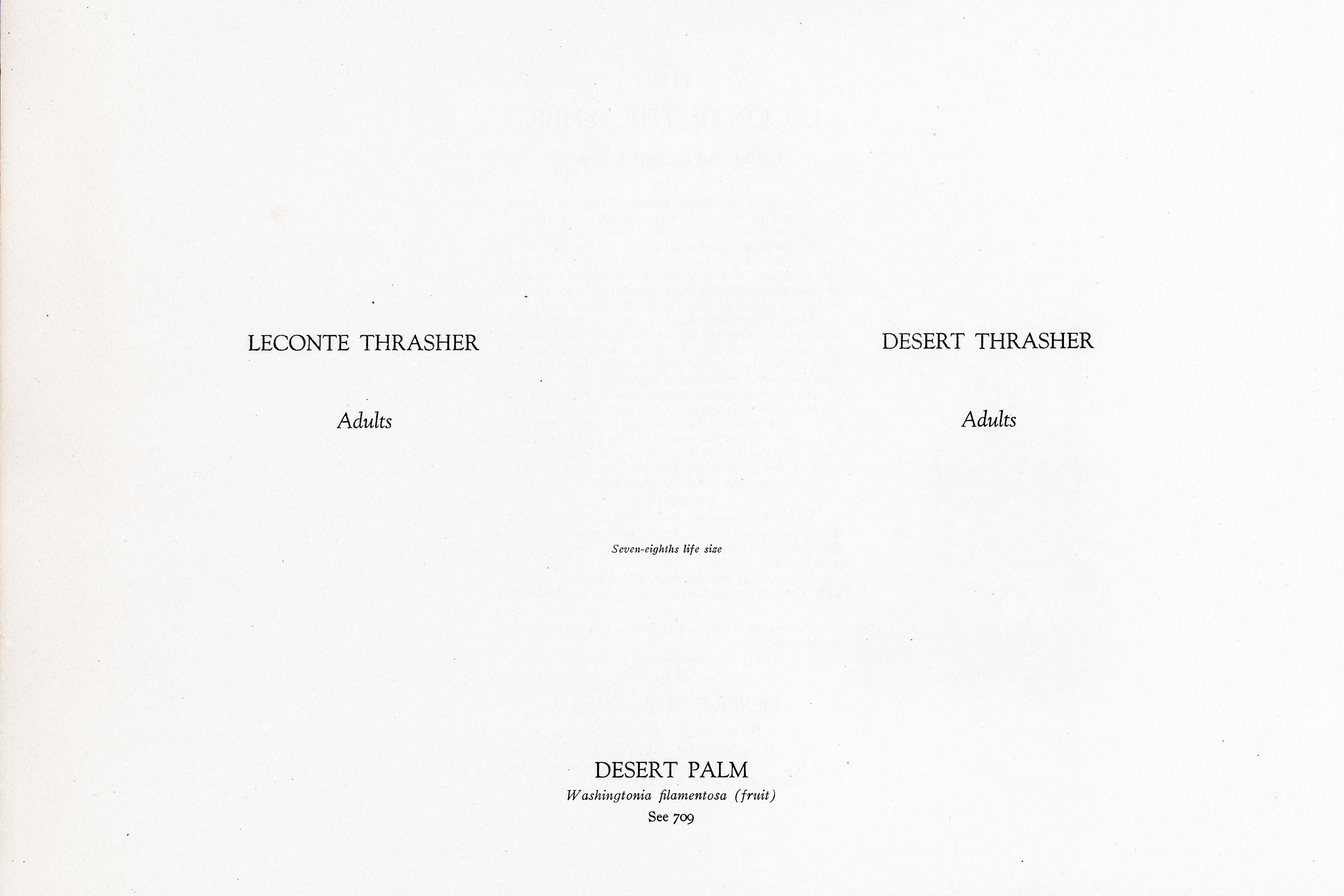
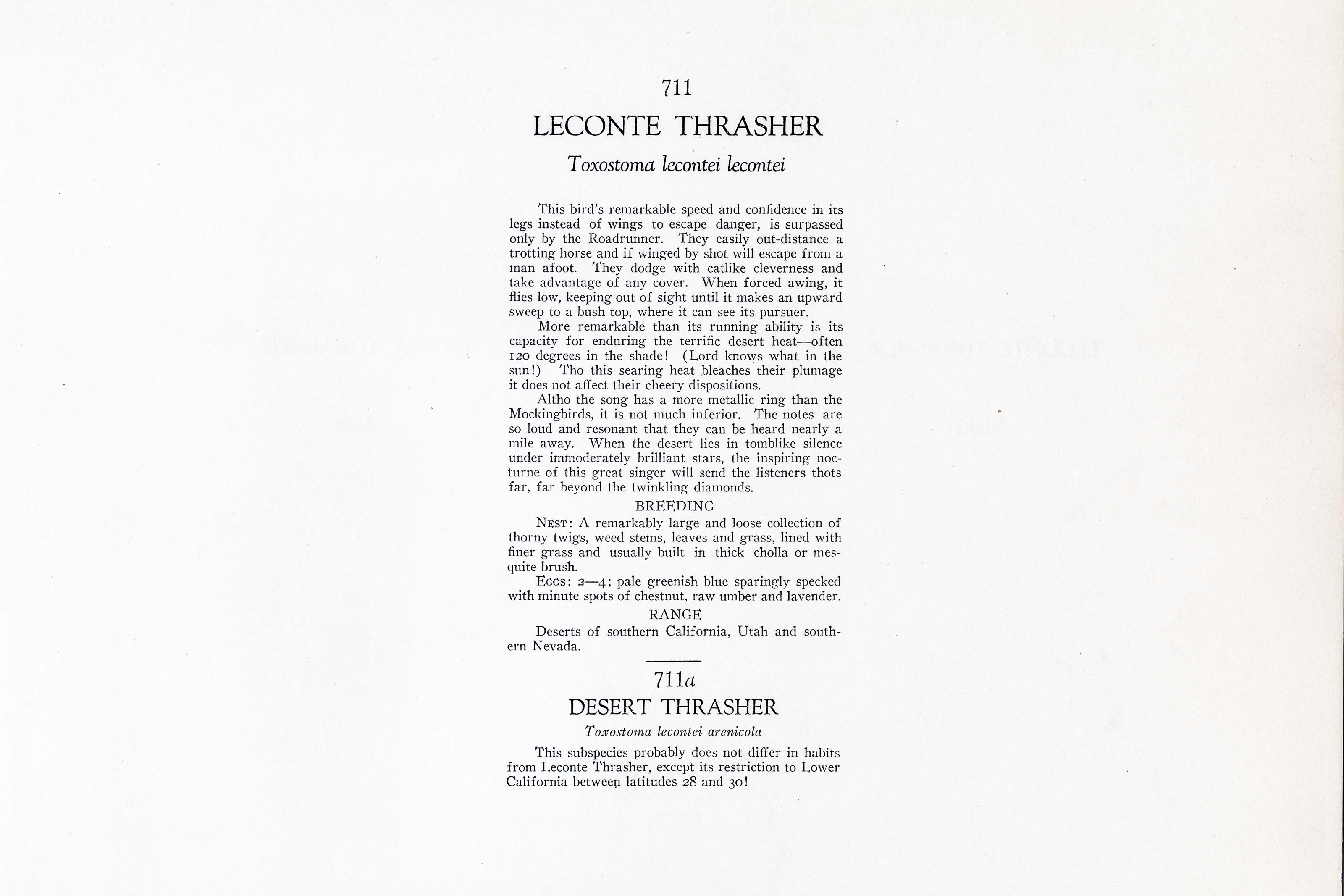

Unknown
1930
11
711-711a
A team of dedicated board members, volunteers, and student interns has published every page in Volume 9. This volume includes 360 images of paintings and lyrical descriptions of birds, now available online for everyone to enjoy anywhere in the world. This is a monumental task. Each volume requires approximately 400 hours to photograph, edit, transcribe, catalog, and publish online. We need your support to complete this work.
If you're tech-savvy, have a good eye, are meticulous with details, and love structured data, please consider volunteering by emailing us at hello@rexbrasher.org.
We encourage all bird lovers and supporters to consider a monetary donation to support our mission to make Rex's work available for everyone. You can provide a one-time or recurring donation online.
This bird's remarkable speed and confidence in its legs instead of wings to escape danger, is surpassed only by the Roadrunner. They easily out-distance a trotting horse and if winged by shot will escape from a man afoot. They dodge with catlike cleverness and take advantage of any cover. When forced awing, it flies low, keeping out of sight until it makes an upward sweep to a bush top, where it can see its pursuer.
More remarkable than its running ability is its capacity for enduring the terrific desert heat — often 120 degrees in the shade! (Lord knows what in the sun!) Tho this searing heat bleaches their plumage it does not affect their cheery dispositions.
Altho the song has a more metallic ring than the Mockingbirds, it is not much inferior. The notes are so loud and resonant that they can be heard nearly a mile away. When the desert lies in tomblike silence under immoderately brilliant stars, the inspiring nocturne of this great singer will send the listeners thots far, far beyond the twinkling diamonds.
NEST: A remarkably large and loose collection of thorny twigs, weed stems, leaves and grass, lined with finer grass and usually built in thick cholla or mesquite brush.
EGGS: 2–4: pale greenish blue sparingly specked with minute spots of chestnut, raw umber and lavender
Deserts of southern California, Utah and southern Nevada.
This subspecies probably does not differ in habits from Leconte Thrasher, except its restriction to Lower California between latitudes 28 and 30!
A tree up to 80 feet, trunk branchless for 50–60 feet, isolated or grouped in depression of Colorado desert in southern California.